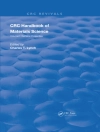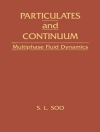The first edited volume addressing analysis for unmanned vehicles, with focus on operations research rather than engineering
* The editors have a unique combination of extensive operational experience and technical expertise
* Chapters address a wide-ranging set of examples, domains and applications
* Accessible to a general readership and also informative for experts
Table des matières
1. Introduction
Jeffrey R. Cares and John Q. Dickmann
2. The In-Transit Vigilant Covering Tour Problem for Routing Unmanned Ground Vehicles
Huang Teng Tan and Raymond R. Hill
3. Near-Optimal Assignment of UAVs to Targets Using a Market-Based Approach
Elad Kivelevitch, Kelly Cohen and Manish Kumar
4. Considering Mine Countermeasures Exploratory Operations Conducted by Autonomous Underwater Vehicles
Bao Nguyen, David Hopkin, and Handson Yip
5. Optical Search by UAVs: Fauna Detection Case Study
R. Prieto, E. Méndez, J.J. Vales, I. Pino, I.R. Carpintero, L. Granado, G. Montoya, F. Giménez de Azcárate, F. Cáceres and J.M. Moreira
6. A Flight Time Approximation Model for Unmanned Aerial Vehicles: Estimating the Effects of Path Variations and Wind
Matthew J. Henchey, Rajan Batta, Mark Karwan and Agamemnon Crassidis
7. Impacts of Unmanned Ground Vehicles on Combined Arms Team Performance
Fred D. J. Bowden, Richard M. Dexter, Denis R. Shine, Andrew W. Coutts, Luke Finlay and Ben Pietsch
8. Processing, Exploitation and Dissemination: When is Aided/Automated Target Recognition ‘Good Enough’ for Operational Use?
Patrick Chisan Hew
9. Analyzing a Design Continuum for Automated Military Convoy Operations
David M. Mahalak
10. Experimental Design for Unmanned Aerial Systems Analysis: Bringing Statistical Rigor to UAS Testing
Raymond R. Hill and Brian B. Stone
11. Total Cost of Ownership (TOC): An Approach for Estimating UMAS Costs
Ricardo Valerdi and Thomas R. Ryan, Jr.
12. Logistic Support for Unmanned Systems
Major Keirin Joyce, Australian Army
13. Organizing for Improved Effectiveness in Networked Operations
Sean Deller, Ghaith Rabadi, Andreas Tolk and Shannon R. Bowling
14. An Exploration of Performance Distributions in Collectives
Jeffrey R. Cares
15. Distributed Combat Power: The Application of Salvo Theory to Unmanned Systems
Jeffrey R. Cares
A propos de l’auteur
Jeffrey Cares is an author, entrepreneur and thought-leader in military innovation. He consults to the most senior levels of the international defense industry and is a leading researcher in collective robotics and networked warfare. He lectures internationally at senior service colleges on the future of combat, and he develops and conducts military and business war games. Harvard Business Review selected Jeff’s research to the Top 20 list of ‘Breakthrough Ideas for 2006, ‘ and he has been featured in such Information Age bellwethers as Wired and Fast Company.
A combat veteran of the first Gulf War, Jeff’s military career included multiple command tours, over a decade of service on four-star staffs, service in the Pentagon and all Fleet Headquarters, and joint and combined operations worldwide. He is a retired Navy Captain.
John Dickmann, Jr is a retired U.S. Navy submarine officer. A graduate of the U.S. Naval Academy, he served on active duty for 22 years in both attack and ballistic missile submarines, with shore assignments in both technical and policy organizations. Following his Navy career, he attended the Massachusetts Institute of Technology, earning a Ph.D. in Engineering Systems. His research focuses on architectures of complex socio-technical systems, emphasizing operational flexibility. He has conducted studies and analysis for the Naval Sea Systems Command, DARPA, the Office of the Secretary of Defense and numerous commercial customers.












